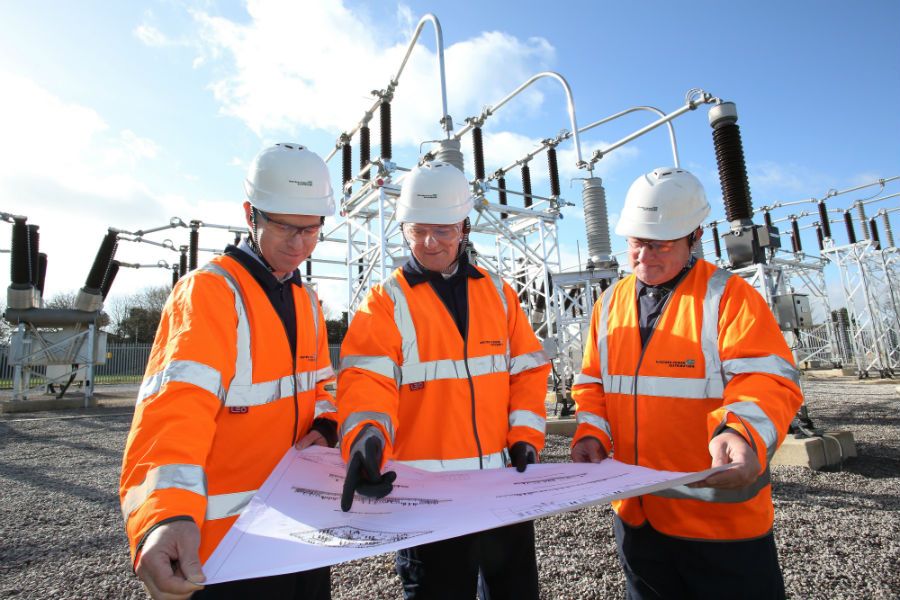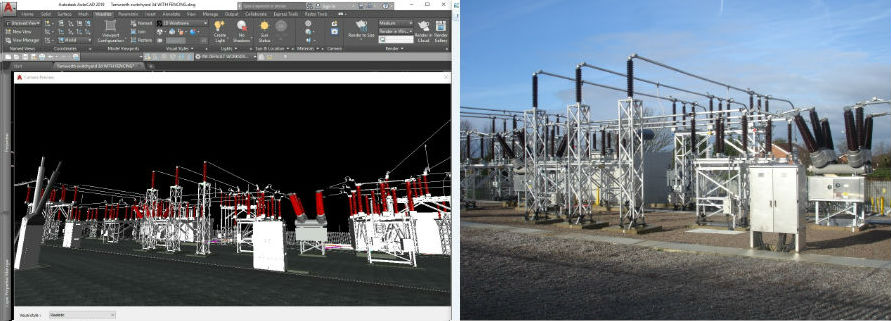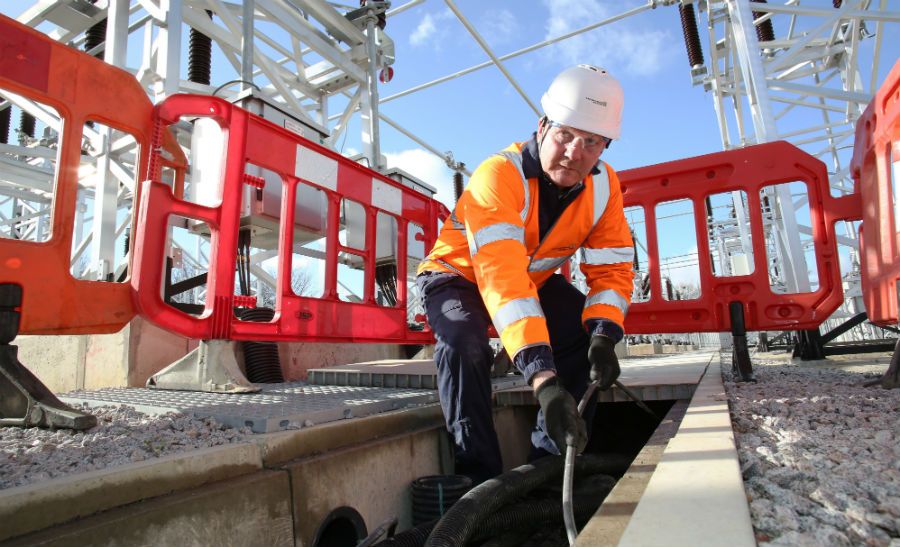3D modelling technology
The latest in 3D modelling technology is revolutionising the design and creation of new substations. One of the first projects to be completed using 3D wizardry is a new substation at Tamworth, Staffordshire.
 (left to right) Conall Holly, East Midlands Engineering Design Team Manager, with Design Engineers Paul Boneham and Simon Warnes.
(left to right) Conall Holly, East Midlands Engineering Design Team Manager, with Design Engineers Paul Boneham and Simon Warnes.
Design engineers used the state-of-the-art 3D AutoCAD program to plan the new substation at Stonydelph Lane down to the smallest detail, which included tackling the sloping nature of the site. Faced with an 800 mm slope, they used the 3D model and a detailed topographical site survey to calculate the exact height and position of concrete foundation bases to make sure there were safe distances between the structures and anyone entering the site.
Design engineer Simon Warnes said: “We started off with a bare patch of land at Tamworth and created a visual model of a whole new substation. With a 2D drawing, what you see is flat. With 3D, you create an image of exactly what is going to be on the site. You can even superimpose vehicles to ensure safe access for the construction and future maintenance of the site.”
 (left)The CAD 3D model and (right) the completed Tamworth site.
(left)The CAD 3D model and (right) the completed Tamworth site.
Three-dimensional imagery is also a faster and more efficient way of producing plans. Design engineer Paul Boneham explained: “With 2D, you draw a separate plan, side view and elevation. If you are changing the plan, you have to change three different drawings each time. But with a 3D model, you create it using library objects from a list. You can also take slices out of the model and the programme will automatically adjust the side and the elevation views.”
Library objects can be selected from a menu and dropped into the model. Paul added: “3D saves lots of time in drawing but also brings added reassurance and time benefits because the computer is doing a lot of the initial calculations. ’Clearance spheres’ can be drawn on any part of the model to the required radius to allow us to make an instant check that no equipment is touching the sphere. We can also send ‘walk through’ videos to the site so that engineers can visualise how and where equipment is going to be installed.”
 Project Engineer Gary Coxon inspecting the cable installation.
Project Engineer Gary Coxon inspecting the cable installation.
One of the biggest challenges for engineers working on the £4-million Tamworth project was to leave one part of the site live while they replaced the existing transformers. To do this, they decided to re-site the substation on a neighbouring piece of unused land. Simon said: “The beauty of this was that it could all be built while the old substation was still running. It was the most economical, technical and operationally sound solution that met our network requirements and the needs of the 33,155 customers served by the substation.”
- About Us
